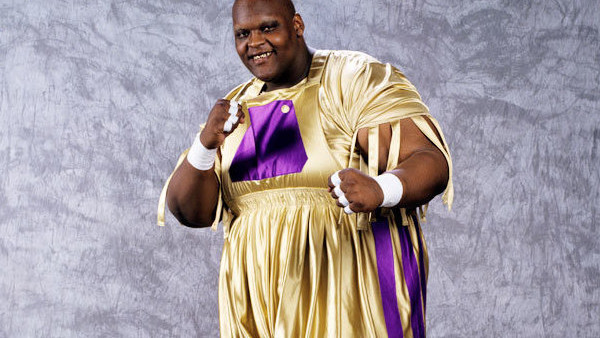Vince McMahon’s Ideal WWE Superstar Body Type Through The Ages

Warrior was a man so muscled people thought he had died and been replaced by a skinny doppelgänger when he stopped - and it’s safe to write this now - injecting himself with steroids, the not-so-secret agent behind the whole WWF enterprise.
The steroids spelled the end - very briefly - of the big man. The early 1990s scandal forced Vince into a re-think. Despite the fan-appointed Bret Hart earning raves for his workrate, Vince’s desire for “big” went unfulfilled. Unable to push performers boasting “enhanced” physiques, Vince happened upon the idea of pushing, ahem, rotund gentlemen in their place. The girth giant that was Yokozuna and the let’s-face-it-obese Mabel occupied the headliner ranks throughout the New Generation, at least until it became apparent that slow and tedious matches were slow and tedious. Muscles were too risky, blubber was too boring. McMahon, with no other option, had to rely on in-ring talent when height failed, too.
The very tall Diesel represented an all-time commercial low for the company throughout his 1994-95 run as WWF Champion. Diesel, at a billed height of 6’ 10”, failed to heighten the excitement of WWF fans - possibly because Vince stripped him of his badass aura and repositioned him as a smiling jackass. Or because SummerSlam 1995 was sold on the strength of Tall Vs. Fat, Diesel Vs. Mabel. Even with business on its a*se, McMahon played to an audience of one. You almost had to admire the man, at least until you watched the match. It was a big bust.
It was up to Hart, again, to carry the company, with the equally athletic and talented and comparatively diminutive Shawn Michaels acting as talisman throughout 1996. Miraculously, Vince didn’t march them out to the ring on stilts.
In the years that followed, the furore surrounding the steroid scandal dissipated. Slowly, the top stars of the WWF grew big once again. The Attitude Era headline acts, Mick Foley excepted, were very…defined. Though nobody was on trial, and thus nobody testified, you’d have to live in Hulk Hogan’s fantasy land to deny that the culture was back. Big time.
As the popularity of the Attitude Era waned, and the muscle monsters of the Ruthless Aggression era quietly honed their skills in Ohio Valley Wrestling, McMahon was forced to settle for Chris Benoit and Eddie Guerrero in the interim. They were juiced to the gills, but that wasn’t enough because they weren’t tall enough.
Brock Lesnar, John Cena, Batista: they were more like it, pal. For a brief time, McMahon revelled once again in big stars and big gates - the OVW star vehicle that was WrestleMania 21 became the biggest-drawing pay-per-view ever for its time - but the events of the Benoit double murder suicide in 2007 and the subsequent Signature Pharmacy Scandal set in motion the definitive end of steroid use in WWE.
Maybe. CONT'D...